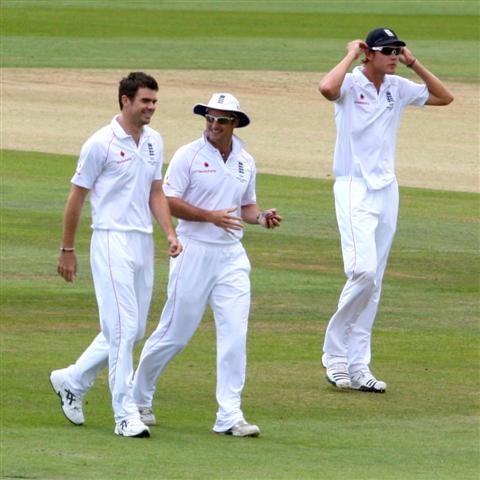2 situations where you can set a field for bad bowling
 Everyone agrees: You can't set a field for bad bowling.
Everyone agrees: You can't set a field for bad bowling.
Like a lot of one-line advice, it's more of a guideline because there are always exceptions. It's the cricketing equivalent of "I before E, except after C".
Most of the time you will set fields that assume the ball will be pitched up hitting off stump. If you bowl a long hop that gets carved away, well, that's your fault.
Put it behind you, listen to the 'sage' advice of your team mates telling you to pitch it up, and get ready to bowl again.
But before you do that, as you walk back consider if you could afford a boundary runner for that bad ball.
Here are some situations where it is possible to cut off the four and not feel like you are covering your own inability to bowl accurately
Leg spin takes a lot more practice to be accurate than conventional spin. As a result, club and school leggies will bowl more long hops and full tosses, especially when they are younger.
So, if you know a long hop is coming set a man back on the boundary, save 3 runs and give the bowler a bit more confidence. With the ball turning away this is usually deep point.
This has the added advantage of making the batsman try and play good balls into the same gap for an 'easy' single. However, with a ball pitched up and turning away, playing square increases the chance of catches behind the wicket.
Of course, this has to be done with caution.
Boundary runners on both sides is a gap too many. Non-first class batsmen are not able to score freely on the on and off side. The good cutter is rarely strong on the leg side too. That means choosing which side to put you man back based on the batsman.
The other situation where you would put a man out for the bad ball is to cut off a batsman's favourite shot.
Let me give you an example from a game I played recently. We were fielding and the openers had put on a big stand, one scoring freely the other holding up and end. We had some luck and got the free scoring batsman out. The 'anchor' batsman didn't look in much trouble, but also was scoring very slowly.
We worked out his two main shots were the cut and cover drive. Bowling at one end was our most accurate medium pacer. He bowled with metronomic accuracy cutting out the option of a cut altogether.
However, the batsman was still looking for the drive, and managed to hit a couple to keep his score ticking.
So I set an in-out off side field. I put a man back on the boundary to stop his best shot going for 4 and put in a short extra cover to stop him playing tip and run.
With his best shot cut off he was forced to improvise, play shots he wasn’t comfortable with and ended up hitting one in the air.
This tactic also works well against a good player who likes to deal in boundaries. Instead of a ring field, cut off his best shot with a man there and put someone in close on the drive. It's frustrating for the batsman and causes mistakes.
For more club cricket tactics, check out ex-Glamorgan player and current club professional Adrian Shaw's online coaching course: The Game Plan: How to Build A Winning Cricket Team
- Login to post comments


Comments
I would say that cutting off the favourite shots will only work with a player of limited ability. If you have an all round batsman that can play the drives, cut, pull and hook, you won't have enough fielders.
However, at club level, where you assume the batsmen may not be so well rounded, it is a good tactic. But there is a limit between good tactics and defensive tactics. You would not want to do what the Banladeshis did against England, and that is basically put a few boundrysaviers within the first 10 overs of an innings. That was merely covering bad bowling, or maybe more accurately, their limited bowling potential.
I agree, but as you say there are not many players who can play every shot in the book, even at first -class level.
One of the things I constantly notice, even at international level, is when captain and bowler don't seem to work together in setting a field and bowling to it properly.
Say a bowler is bowling in the corridor outside off, and the batsman is constantly scoring runs to third man with a late cut. What needs to happen is EITHER that the captain needs to move his field to cut off the easy runs, OR the bowler needs to chage his plan of attack. What almost inevitably happens is BOTH - and the two things now work against each other. The captain moves his midwicket over to field at third man, and the bowler simultaneously decides to take matters into his own hands by bowling a more middle stump line. What happens next? Why the batsman starts hitting the straighter deliveries through the vacant midwicket, and the poor captain can't think how his cunning plan could possibly have failed.